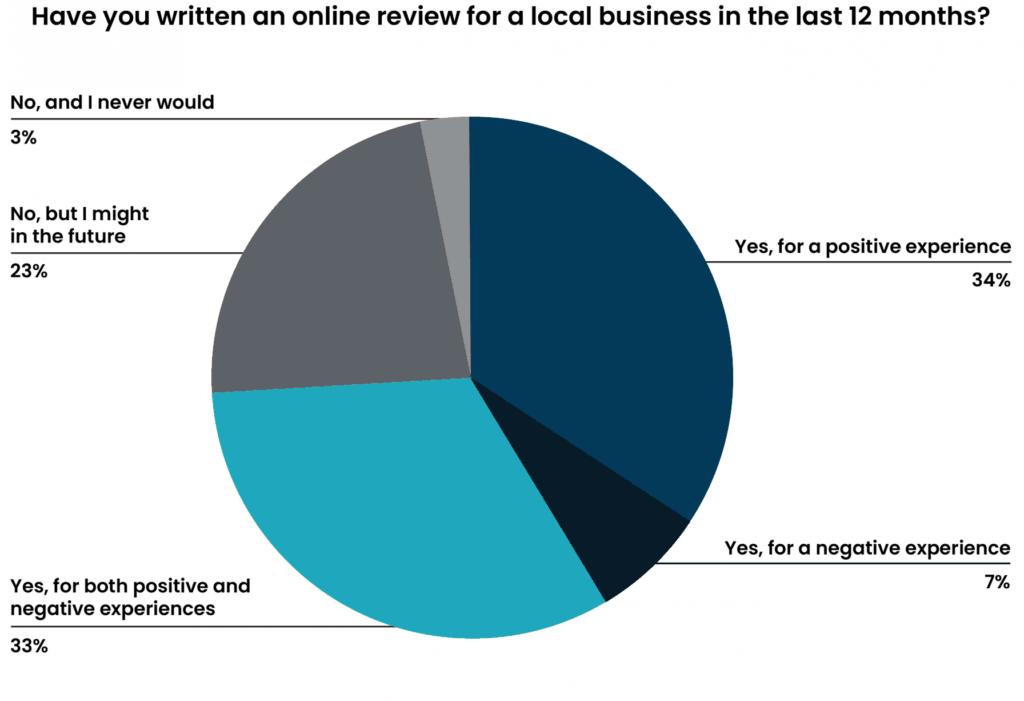Top 5 Negative SEO Attacks You Should Keep An Eye On
Negative SEO attacks, without a doubt, can be very harmful to your website, drop your SEO rankings, ruin your website reputation, lose customer trust, and leave you with a ton of work to recover.
This article explains the five most common types of negative SEO attacks and offers tips on preventing them. Let’s dive in!
What is Negative SEO?
Negative SEO is a process done by an individual with bad intentions using unethical methods and tools to crash someone’s website rankings on search engines like Google. It’s also known as ”Black Hat SEO”.
How Do I Know if My SEO is Negative?
We’ve picked 5 main points that can identify if your website has been affected by a negative SEO attack:
- a sudden drop in rankings;
- your website gets slow and receives lots of overwhelming and unauthorized bot traffic;
- being notified by Google about possible fake reviews or malicious activity on your website;
- high increase in backlinks with low domain authority;
- a rapid drop in keyword rankings.
5 Types of Negative On-Page SEO Attacks
- Content Scraping
- Fake Reviews
- Hacking a Site
- Link Farming
- DDoS Attacks
1. Content Scraping
What is Content Scraping?
Content scraping occurs when someone downloads all the information and data from your website to use it for his benefit.
Have you ever found websites with identical information? Or maybe you have discovered that someone stole all the content from your page, and you didn’t know what to do? Well, this is the exact case we’re going to dive into!
Anything posted online–images, videos, texts, HTML code, etc.–can be easily stolen and reposted on another site. It could be as basic as the “copy and paste” method or a more complicated scraper bot use.
This method is called content scraping, and without the permission of the website’s owner, it’s illegal!
How Does Content Scraping Work?
Scraping bots can download all of the data from your website in seconds. The scraper can use the gathered information on their page to improve their on-page SEO via keywords and high-quality content, and even steal organic traffic.

Source: Imperva
How to Prevent Content Scraping?
Here are 6 methods to protect your content from malicious content scrapers:
- Use SEO tools, like Ahrefs, to keep an eye on the quality of your backlink profile and keyword rankings and even spot stolen content.
- Insert media objects–images, audio, video, pdf, etc.–to make content scraping more complex.
- Sign up for Google Search Console to claim copyright for your content.
- Use internal links if you want to spot trackbacks from a content scraper.
- Ask for login info to get access to your content. It can give you some additional information about who the scraper is.
- Use CAPTCHA. It can prevent content scraping from a website.
2. Fake Reviews
Fake reviews can damage your company’s reputation and deceive customers about the quality of your service or product.
Suppose you’ve been influenced by someone else’s opinion about a certain product or service. In that case, you probably understand how significant a good or a bad review is to a company.
Reviews leave an impact on the consumer’s decision-making process. So, you want to ensure your website’s reviews are accurate and trustworthy, right?
How to Spot Fake Reviews?
To tell if your website’s online reviews are fake, you need to check:
- if the reviewer has a trustworthy and realistic profile;
- if the review is related to your content or service;
- if the reviewer has used a different language or inarticulate words or symbols;
- if there are many similar reviews at the same time.
According to a Bright Local study, the number of consumers who regularly read online reviews for local businesses increased by 17% in 2021 compared to 2020.
The study showed that 74% of respondents leave reviews–34% only for positive experiences, whereas 7% only for negative experiences and 33% for both.

Source: BrightLocal
Reviews can improve your SEO, so you should keep an eye on reviews related to your site. Data shows that 62% of consumers have spotted a fake review about their business in 2021.

How to Remove Fake Google Reviews?
If you have spotted that there is a fake review about your business on Google, you need to:
- Flag the review as inappropriate.

or

- Ask for help from Google’s support team. Email to [email protected].
- Contact Google through Twitter–@GoogleMyBiz–to get extra attention.
How to Avoid Fake Reviews?
Here are 3 techniques that can help you to avoid fake reviews:
- Allow reviews from verified profiles to prove authenticity, such as post-purchase feedback.
- Set up Google Alerts for your reviews because it keeps you updated on who, when, and how has reviewed your content.
- Use a browser plugin that helps analyze reviews, such as Fakespot or ReviewMeta.
3. Hacking a Site
What is Website Hacking?
Website hacking can happen in different forms, but in the worst case, someone hacks into your system and steals, damages, or changes important information for their benefit.
Improve your cybersecurity to protect your website from hacking. If your site isn’t protected enough, it might be a tempting target for hackers.
Who Can Hack Your Website?
Hackers can hack your site. They are criminals who always find a way to attack someone online and access the website’s data without permission.
If a malicious code is found on a website, Google can restrict the website’s traffic until everything is fixed. It affects the site’s SEO rankings and harms your brand’s reputation.
A survey by Accenture shows that in 2021, attacks per company worldwide increased by 31%.

Source: Accenture
If your website gets hacked, attackers can perform negative on-page SEO and rewrite your content with toxic and negative terms, which can trigger a warning from Google or even shut down your site temporarily.
How to Prevent Getting Hacked?
Here are 7 tips you can use to protect yourself from getting hacked:
- Keep your WordPress and other software updated.
- Don’t install unreviewed or pirated plugins.
- Sign up for Google Search Console so Google can inform you about hacking or website vulnerabilities.
- Install SSL (Secure Sockets Layer) for your domain.
- Consider getting security plugins for WordPress, such as Wordfence.
- Don’t take your website’s backup for granted!
- Use a virtual private network (VPN) that hides your online activity and personally identifiable information. A VPN gives you anonymity by masking your IP address, making your online actions virtually untraceable.
Understanding what is attack surface management is also crucial – it helps you identify and monitor all possible entry points that hackers could exploit to access your system.
4. Link Farming
What is Link Farming?
Link farming is quite an outdated negative SEO method. However, people still tend to use it today despite its low effectiveness.
A link farm is a group of websites that link to each other. Links farm’s primary goal is to artificially improve the rankings for those websites. These websites usually consist of low-quality content that has no value.

Source: Delante
Link farming is a punishable act, and most search engines impose penalties for this practice. For example, if your website violates Google’s Webmaster guidelines, it might result in a long term ranking drop or even removal of the farmer’s website.
Should You Use Link Farms?
Link farming is something you should simply avoid and be aware of. It promises a quick boost for your website’s rankings, but remember there is no quick way for SEO, and it takes time and effort!
Some people can be tricked into this link scheme without knowing it’s illegal.
If you think that you’ve encountered a suspicious website that might be a part of a link farm, then do a favor and report it to Google for using malicious software here.
Some might use these link farms to sabotage the rankings of a real website, and that’s why it’s worth mentioning.
Related Article: Hit by A Link Farm – Own Case Study and How To Troubleshoot
5. DDoS Attacks
What are DDoS Attacks?
A DDoS (Distributed Denial of Service) attack is an attempt to disrupt an online server by making a publisher’s website unavailable for users. It disturbs the normal traffic of the owner’s website and overwhelms it with bad-bot traffic from multiple online sources.

Source: Avi Networks
The impact of a DDoS attack may be significantly harmful to a website and cause losses in ad revenue. The recovery may last for days, weeks or even months, regardless of whether these attacks occur as short bursts or frequent strikes.
In the graph below you can see that the largest percentage of total DDoS attacks have occurred during Q4 of 2021, and have increased by more than 52% compared to Q3 of 2021.
Kaspersky said: “we saw impressive growth in the number of DDoS attacks, setting a new record in the history of our observations.”

Source: Kaspersky
According to data, the highest amount of DDoS attacks occurred in Q4 of 2021, and 46% of these attacks happened during November.

Unsurprisingly, in November 2021, Microsoft announced that they had experienced the largest DDoS attack in history. It came from around 10 000 sources from multiple countries worldwide, targeting Azure in Asia.
How to Know if Your Site Has Been Affected By DDoS Attack?
DDoS attacks can be divided into 3 main categories:
- Volumetric attacks: overwhelm your website’s network with data packets by flooding the IP (Internet Protocol) transmissions, which affects the website’s traffic flow.
- Protocol attacks: affect networking services, like the firewall. If there is a minor issue in the system, the attack is sent through that point to attack your website.
- Application layer: attacks target vulnerabilities and issues in the application, for example, a web server, which can disturb the content delivery to the user.
How to Prevent DDoS Attacks?
We have gathered 5 ways for you to avoid DDoS attacks:
- Research the attack symptoms (e.g. slow website, denied access to a website) of a DDoS attack in case they appear.
- Create a clear response plan to a DDoS attack.
- Improve security to protect your network. Use web application firewalls, network segmentation, anti-DDoS hardware and software.
- Expand your bandwidth or use cloud services, for example, SaaS (preferably, both).
- Keep an eye on your network traffic or use CM (continuous monitoring) software, such as SolarWinds.
DDoS attacks have become more frequent and harmful than ever, so they should be at the top of your website’s security to-do list.
Last But Not Least
Beware of the risks of potential negative SEO attacks and try to stay on the safe side! Use our mentioned tips on preventing these attacks–be safe than sorry for later.
If you still have any questions about specific negative SEO attacks or their prevention, write to us at [email protected].


